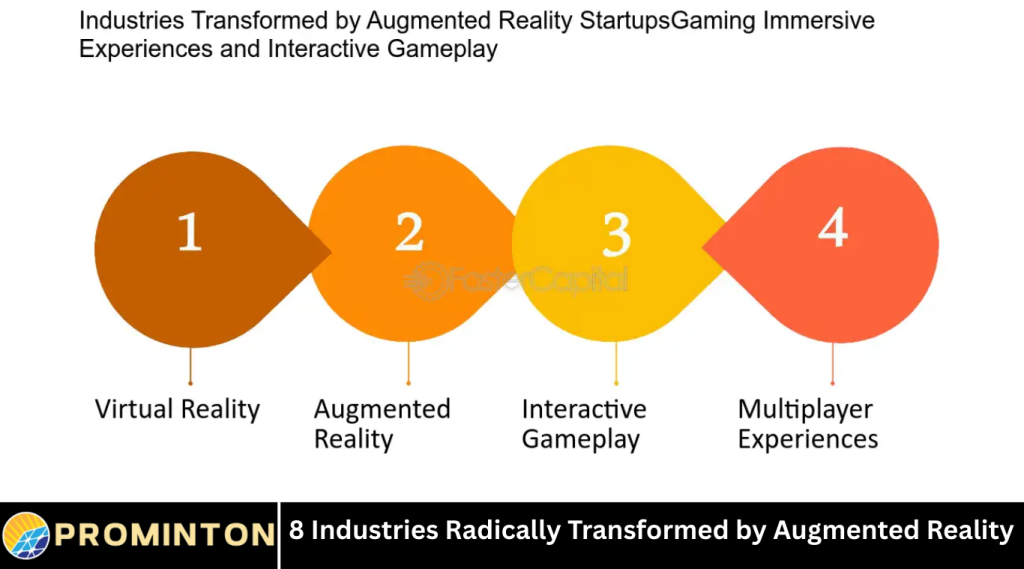Augmented Reality (AR) is no longer just a concept from science fiction. It has become a powerful technology that overlays digital information onto the real world, changing the way we interact with our surroundings. AR uses devices like smartphones, tablets, and special glasses to enhance what we see by adding graphics, sounds, and other sensory inputs.
This technology is creating new opportunities and transforming various industries in ways that were once unimaginable. From entertainment and education to healthcare and manufacturing, AR is driving innovation and improving efficiency.
In this article, we will explore eight key industries that are being radically transformed by augmented reality. Understanding these changes helps us appreciate how AR is shaping the future of business and daily life.
Retail and E-commerce
Augmented reality is changing how customers shop and interact with products.
Virtual Try-Ons
Shoppers can use AR to try on clothes, glasses, or makeup virtually. This allows customers to see how products look on them without physically wearing or applying them. It improves the shopping experience and reduces returns.
Interactive Storefronts
Retailers are using AR to create interactive displays. Passersby can point their phones at windows or posters to see more information, animations, or special offers.
Product Visualization
AR helps customers visualize furniture, home decor, or appliances in their own space before buying. This reduces uncertainty and helps make better purchasing decisions.
Healthcare and Medicine
AR is revolutionizing healthcare by providing new tools for doctors and patients.
Surgical Assistance
Surgeons use AR to overlay images of organs and blood vessels during operations. This helps in precise navigation and improves outcomes.
Medical Training
AR provides interactive training for medical students. They can practice procedures on virtual patients, gaining skills in a safe environment.
Patient Care
AR apps help patients understand their conditions by visualizing anatomy or treatment plans. It also supports rehabilitation exercises with real-time feedback.
Education and Training
AR is transforming the way students learn and professionals train.
Interactive Learning
AR makes learning more engaging by bringing textbooks and lessons to life. Students can explore 3D models of planets, historical sites, or the human body.
Skill Development
Industries like aviation and manufacturing use AR for hands-on training without the risks of real equipment. Trainees can practice complex tasks step by step.
Remote Collaboration
AR allows students and instructors in different locations to interact with virtual objects and collaborate in real time.
Manufacturing and Industry
Augmented reality is improving productivity and safety in manufacturing.
Assembly and Maintenance
Workers use AR glasses to receive real-time instructions while assembling products or repairing machines. This reduces errors and speeds up processes.
Quality Control
AR systems can highlight defects or deviations in products during production, ensuring higher quality standards.
Design and Prototyping
Engineers and designers use AR to visualize prototypes and make changes quickly, saving time and resources.
Real Estate and Architecture
AR is changing how properties are designed, marketed, and experienced.
Virtual Property Tours
Potential buyers can take virtual tours of homes and buildings using AR before visiting in person. This saves time and enhances decision-making.
Design Visualization
Architects use AR to overlay building designs onto real environments. Clients can see how a project will look once completed.
Space Planning
AR helps interior designers and homeowners plan furniture placement and decor by visualizing items in real spaces.
Entertainment and Gaming
The entertainment industry is one of the most visible users of augmented reality.
Immersive Gaming
AR games blend the real world with digital characters and objects, creating unique experiences. Popular games like Pokémon Go have shown the potential of AR.
Live Events
AR enhances concerts, sports, and theater performances with interactive visuals and information.
Content Creation
Artists and filmmakers use AR to create new forms of storytelling that engage audiences in innovative ways.
Tourism and Travel
Augmented reality enriches travel experiences by providing more information and interactivity.
Guided Tours
Tourists can use AR apps to get historical facts, translations, or directions overlaid on landmarks and streets.
Virtual Exploration
People can explore destinations virtually through AR before deciding where to travel.
Language Assistance
AR translation apps help travelers understand signs, menus, and conversations in foreign languages instantly.
Automotive Industry
AR is reshaping how cars are designed, driven, and maintained.
Heads-Up Displays
Many modern vehicles use AR to project important information like speed and navigation onto the windshield, allowing drivers to keep their eyes on the road.
Driver Assistance
AR systems provide alerts for obstacles, lane changes, and parking assistance, improving safety.
Design and Manufacturing
Automakers use AR to design vehicles and assist assembly workers on the production line.
Frequently Asked Questions
What is augmented reality?
Augmented reality is a technology that overlays digital information such as images, sounds, or data onto the real world, enhancing what we see and experience.
How does augmented reality differ from virtual reality?
Augmented reality adds digital elements to the real world, while virtual reality creates a completely immersive digital environment separate from reality.
What devices are used for augmented reality?
AR can be experienced through smartphones, tablets, AR glasses, and headsets designed to overlay digital content on the physical world.
How is augmented reality used in healthcare?
In healthcare, AR assists in surgeries, medical training, patient care, and rehabilitation by providing interactive and real-time visual information.
Can augmented reality improve shopping experiences?
Yes, AR allows customers to try on products virtually, visualize items in their home, and interact with stores, making shopping more convenient and personalized.
What industries benefit most from augmented reality?
Retail, healthcare, education, manufacturing, real estate, entertainment, tourism, and automotive industries are among those transformed by AR.
Is augmented reality safe to use?
When used responsibly, AR is generally safe. Users should follow device guidelines and avoid distractions while using AR in situations like driving.
Conclusion
Augmented reality is no longer limited to entertainment or gaming; it has become a transformative force across many industries. From retail and healthcare to manufacturing and automotive, AR enhances experiences, improves efficiency, and opens new possibilities.
As AR technology continues to advance, we can expect even more innovative applications that will further change how we work, learn, shop, and live. Embracing augmented reality offers businesses and individuals the chance to stay ahead in an increasingly digital world.



